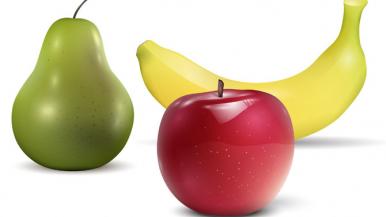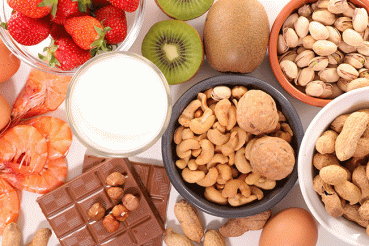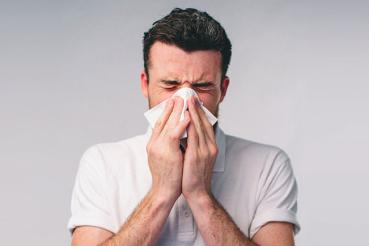Each fall, as ragweed releases its pollen into the air, people with seasonal allergies start sniffling and wheezing. But the problems don't always stop there.
"For some people who are allergic to ragweed, if they eat a banana, their mouth starts to itch or their throat can feel like its swelling," says Mary C. Tobin, MD, an allergist at Rush.
The reason? These people have pollen food allergy syndrome, also known as oral allergy syndrome. This means they experience allergic reactions to certain fruits and vegetables that contain proteins similar to those in allergenic trees and weeds.
For example, people who have birch pollen allergies might react negatively to carrots, celery, apples and peaches, while those allergic to ragweed may need to avoid melons and tomatoes in addition to bananas.
People often consume these foods in combination with others, of course, and the reactions they trigger can vary widely and mimic the symptoms of other conditions. As a result, it's not always easy to identify the condition and link the culprit foods with the symptoms they cause. But doing so, Tobin says, can lead to effective treatment.
Identifying symptoms
Unlike common allergies to foods such as peanuts and tree nuts — which most often appear in early childhood — pollen food allergy syndrome typically develops in adolescence or adulthood, after repeated exposure to the cross-reacting pollens.
Tobin estimates that the condition, which can appear suddenly, afflicts about 50 percent of adults with seasonal allergies and accounts for about 60 percent of all allergic reactions to food in adulthood.
But many people with the condition might not realize they have it because these reactions aren't limited to the hives and itchy mouth commonly associated with allergies. Reactions can also include neurological problems, such as migraines or trouble concentrating, and array of gastrointestinal issues.
"We have a lot of people who come in with nonspecific abdominal pain, diarrhea, cramps or incapacitating gastrointestinal problems," Tobin says. "And we've found that in many of these people it's allergies that hadn't been recognized as part of their allergy symptoms."
Finding treatments
To determine which allergies are causing which symptoms in each patient, Tobin and several colleagues — including a gastroenterologist, a pathologist and a dietitian — track and experiment with patients' diets in addition to conducting any necessary tests.
This process can be complicated because patients often have reactions to more than one food. Someone who gets hives from bananas, for example, might get cramps after eating cantaloupe.
The good news for these patients is that simply treating their seasonal allergies can in many cases solve gastrointestinal issues and other problems they might not have known were related.
"If the foods causing the problems are cross-reacting with pollen, you can avoid those foods, take antihistamines, and a lot of the time, you get better," Tobin says. "For someone who has been suffering from these problems that hadn't been explained, that can be life-changing."
It's not always easy to identify the condition and link the culprit foods with the symptoms they cause. But doing so can lead to effective treatment.
Pollen-related food allergies
Pollen food allergy syndrome may cause people with allergies to the following pollens to react to the related foods:
- Birch tree: apple, carrot, celery, cherry, fennel, kiwi, parsley, peach, pear, plum
- Grass: celery, melon, orange, peach, tomato
- Ragweed: banana, cucumber, melon, zucchini




